What Is the Art Called When Things Are the Wrong Colors
At that place is more than a lifetime of knowledge to gain from principal artists and their relationship with color. Every bit we view color through the eyes of great artists we notice their intense passions, unavoidable obsessions and staunch behavior most the powers of color. This article provides some insight on this huge and incredible subject. To learn more about our interest in color find out virtually our online art exhibition "The Healing Power of Colour". You may as well want to read my previous article "Dozens of Facts About the Power of Colour".
 Helen Frankenthaler's Innovative Evolution Using Colour
Helen Frankenthaler's Innovative Evolution Using Colour
Helen Frankenthaler was innovative in her use of color and it evolved throughout her career. She began exhibiting her big-scale abstruse expressionist paintings in contemporary museums and galleries in the early 1950s. Spontaneity was important to her, as the artist stated, "A actually good picture looks as if it'due south happened at once."
In the 1960s, she began to identify strips of colors near the edges of her paintings, thus involving the edges as a part of the compositional whole. She began to make use of single stains and blots of solid color confronting white backgrounds, oft in the class of geometric shapes. By the 1970s, she started using thicker paint that allowed her to employ bright colors well-nigh reminiscent of Fauvism. Throughout the 1970s, Frankenthaler explored the joining of areas of the canvas through the use of modulated hues, and experimented with large, abstruse forms. Her work in the 1980s was characterized as much calmer, with its use of muted colors and relaxed brushwork.
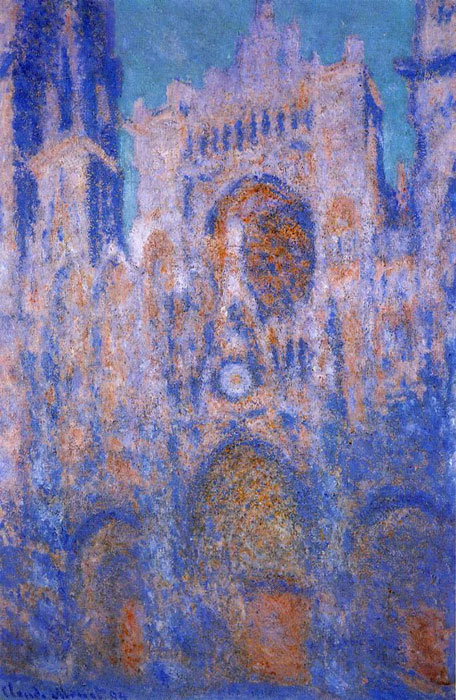
Monet's Obsession With Colour
Claude Monet exclaimed, "Color is my solar day long obsession, joy and torment." As he studied color he repeatedly painted the same subject at different times of twenty-four hour period and in different weather conditions. One of his best known series is "The Rouen Cathedral". He captured the façade under different lighting conditions. They are first-class examples of how low-cal affects color on subjects. He reworked these paintings in his studio, as he explored a myriad examples of colors and moods.
When giving advice to artists he wrote, "When you become out to paint, try to forget what objects y'all have before you, a tree, a house, a field or whatever. Merely retrieve here is a niggling square of blue, here an ellipsoidal of pink, here a streak of yellow, and pigment it just as it looks to you, the exact color and shape."
Van Gogh'south Beliefs About Color
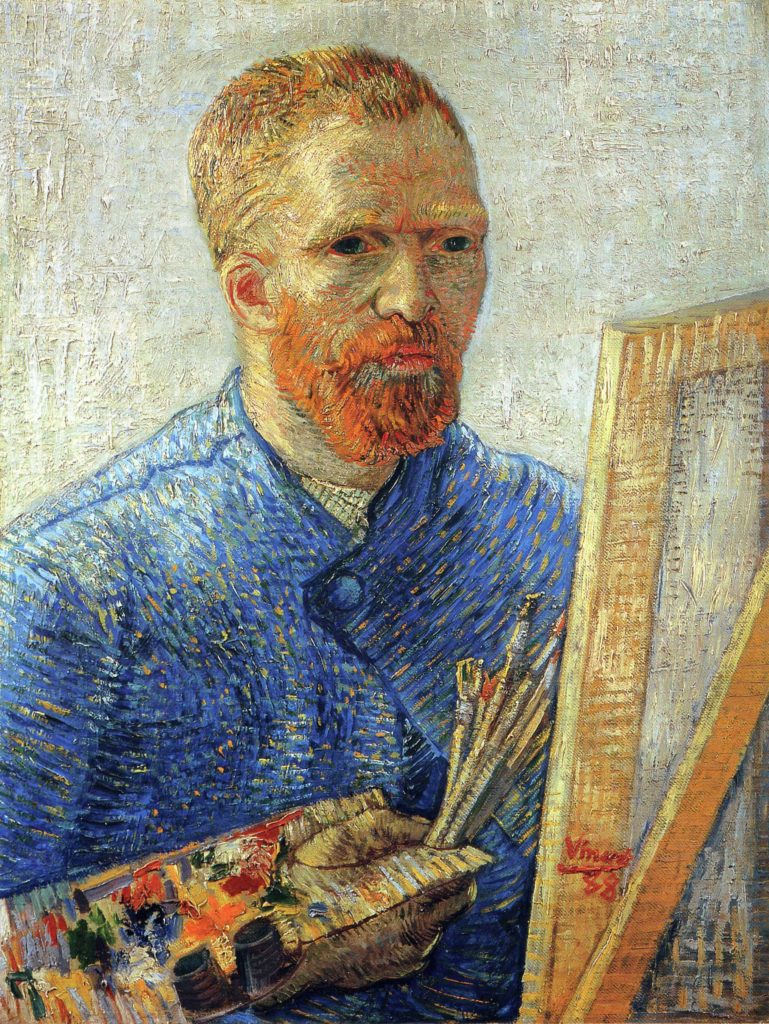
Vincent van Gogh oftentimes expressed his preoccupation with colour in his writings. He wrote, "…the painter of the future will be a colourist the like of which has never nonetheless been seen. But I'g sure I am correct to think that it will come in a later generation, and it is up to united states of america to do all we can to encourage it, without question or complaint."
He was deeply aware of the relationship colors had on each other and wrote, "There is no blue without yellow and without orange."
O'Keeffe's Masterful Use of Color
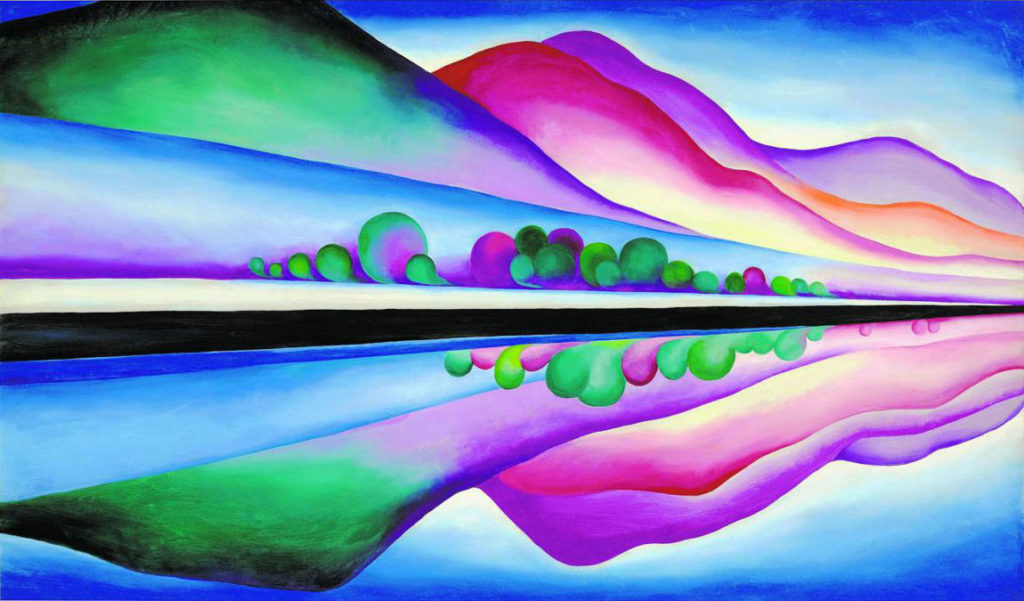 A stunning example of the use of both analogous and complementary colors to create free energy and bold contrast with a sense of harmony and balance is Georgia O'Keeffe's painting "Lake George Reflection". In this piece of work of art O'Keeffe takes the viewer in the direction she wants us to go.
A stunning example of the use of both analogous and complementary colors to create free energy and bold contrast with a sense of harmony and balance is Georgia O'Keeffe's painting "Lake George Reflection". In this piece of work of art O'Keeffe takes the viewer in the direction she wants us to go.
Opposite colors — shades of red and green — serve to limited power and contrast, while coordinating colors –crimson against purple and blue with greenish — create passages of tranquillity and calmness. Also find her employ of black and white, racing across the heart of the canvas, without which this painting would not take the same glorious intensity and weigh.
Matisse and Color to Express Lite
Henri Matisse stated, "The chief office of colour should exist to serve expression. Colour helps to limited low-cal, not the physical phenomenon, only the but low-cal that really exists, that in the artist'south encephalon." He likewise wrote, "Before, when I didn't know what colour to put downwards, I put down blackness. Black is a strength: I depend on blackness to simplify the construction. Now I've given upwardly blacks."
Kandinsky's Theory About Colour and Spirituality
As a child Wassily Kandinsky learned to play the cello and piano. Every bit an artist, he made associations between fine art and music. "The audio of colors is so definite that it would exist hard to find anyone who would express bright yellowish with base notes, or dark lake with the treble." He wrote, "Color is the keyboard, the eyes are the harmonies, the soul is the pianoforte with many strings. The artist is the mitt that plays, touching one central or another, to cause vibrations in the soul."
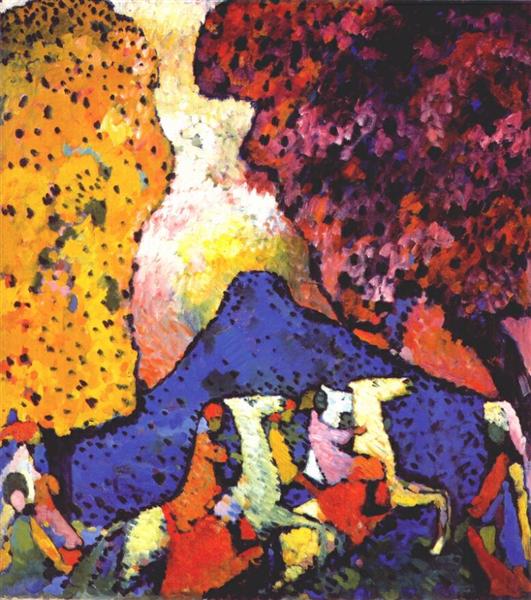
Kandinsky wrote extensively most his belief that colors and shapes could touch our mood and that it provokes a psychic vibration. "Color hides a power withal unknown only real, which acts on every office of the human being body."
Turner and The Color Yellow
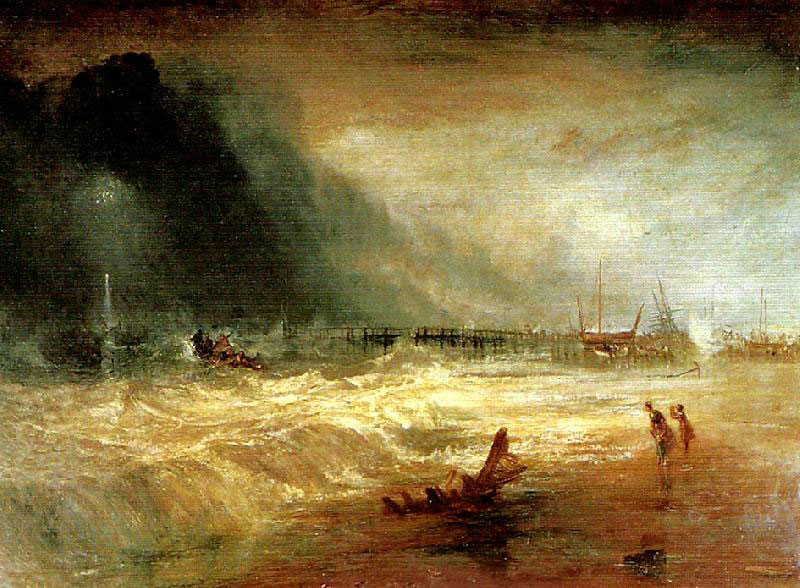
The British painter J. M. Due west. Turner, was an English language Romantic painter, printmaker and watercolorist known for his expressive colorization and sublime sunlit seascapes. He had a stiff passion for using the colour xanthous. This caused critics to criticize him, writing that his images were "afflicted with jaundice." The artist used the experimental watercolor Indian Yellowish, which was a fluorescent paint derived from the urine of mango-fed cows. To achieve brighter accents the creative person employed the synthetic Chrome Xanthous, a atomic number 82-based paint known to crusade delirium.
Giotto's Powerful Message With the Colour Blue
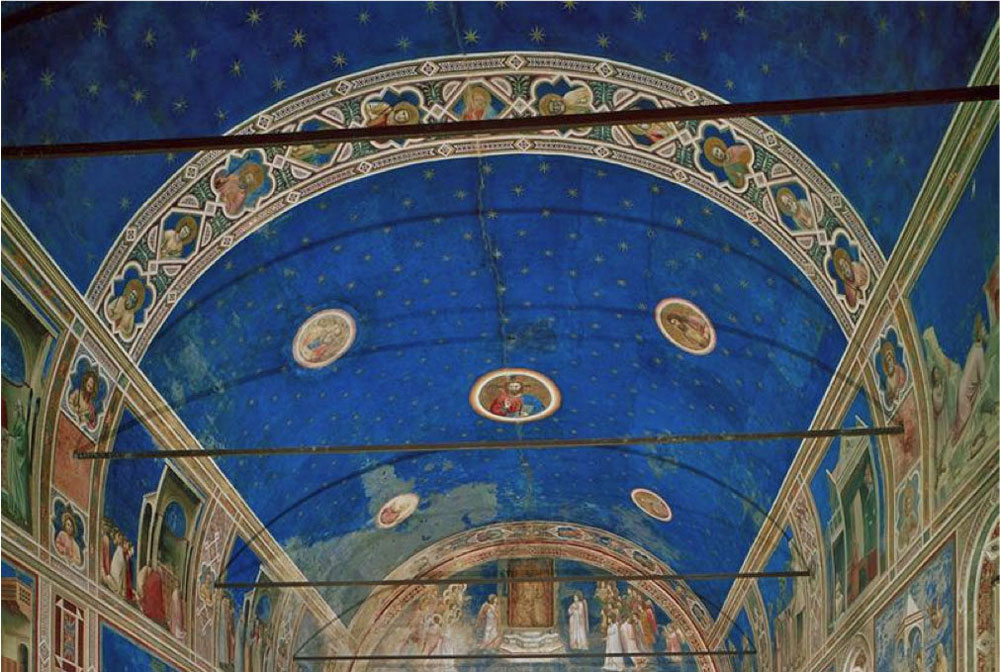
In most ancient cultures the color gold was was considered to represent the sun and the spirit of God. That inverse when Giotto, an Italian painter and architect from Florence during the Late Center Ages, believed the color blue represented sky and eternal existence. He became obsessed with the colour and painted the ceiling of the Scrovegni Chapel a radiant blue. This was a complete departure from the gold that had been used past previous painters that was associated with opulence and grandeur.
The bluish sky that fills a large portion of many scenes in the cathedral provides a unifying and expansive feeling of unlimited possibilities.
Picasso's Blue Period
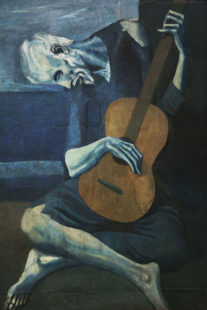
Information technology has been said that Picasso'south three year "Blue Catamenia", from 1901-1904, expressed his tour with depression following the tragic suicide of his friend Carlos Casagemas. It was a tremendous loss for the artist who changed from his typical gregarious personality to ane who sank into a period of despair and recluse. Carl Jung referred to Picasso's mental state as one of schizophrenia.
Possibly his most well known piece of work from this period is "The One-time Guitarist", which depicts an old beggar in torn wear, playing the streets of Barcelona, Spain. Picasso's "Blueish Series" series demonstrates how the color blueish, when used in heavy doses in the style in which Picasso used it could propel the viewer into a state of gloom and melancholy.
Color Field Painting
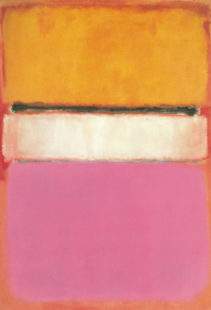
In the 1940's and 50's in NYC, NY a manner of painting emerged known as "Color Field" painting. This style is characterized primarily by big fields of flat, solid color spread across or stained into the canvas. In this motility color becomes the subject in itself.
The leading pioneers of this motion were Helen Frankenthaler, Barnett Newman, Marker Rothko, and Clyfford Still and others.
Rothko considered color to be an instrument that served a greater purpose which was to evoke our most basic emotions. Each of Rothko'due south works was intended to evoke different meanings depending on the viewer. He achieved resonance through the use of layering colors.
"White Center" is part of Rothko's signature multiform style, in which several blocks of layered colors shimmer on a big canvas.
Leger's Quote About Color
In his "On Monumentality and Color", 1943, Fernand Leger wrote, "The craving for colour is a natural necessity simply as for water and fire. Color is a raw material indispensable to life. At every era of his existence and his history, the human being has associated colour with his joys, his actions and his pleasures."
The Fascinating Report of Color
This article merely scratches the surface with a small collection of examples in which artists accept used color over the ages. I encourage you lot to explore this subject further and y'all'll notice a world of magic awaiting you. You may likewise want to read "Dozens of Facts About the Ability of Color".
View Some of the Art from "The Healing Power of Color"

Source: https://www.healing-power-of-art.org/master-artists-and-their-relationship-with-color/